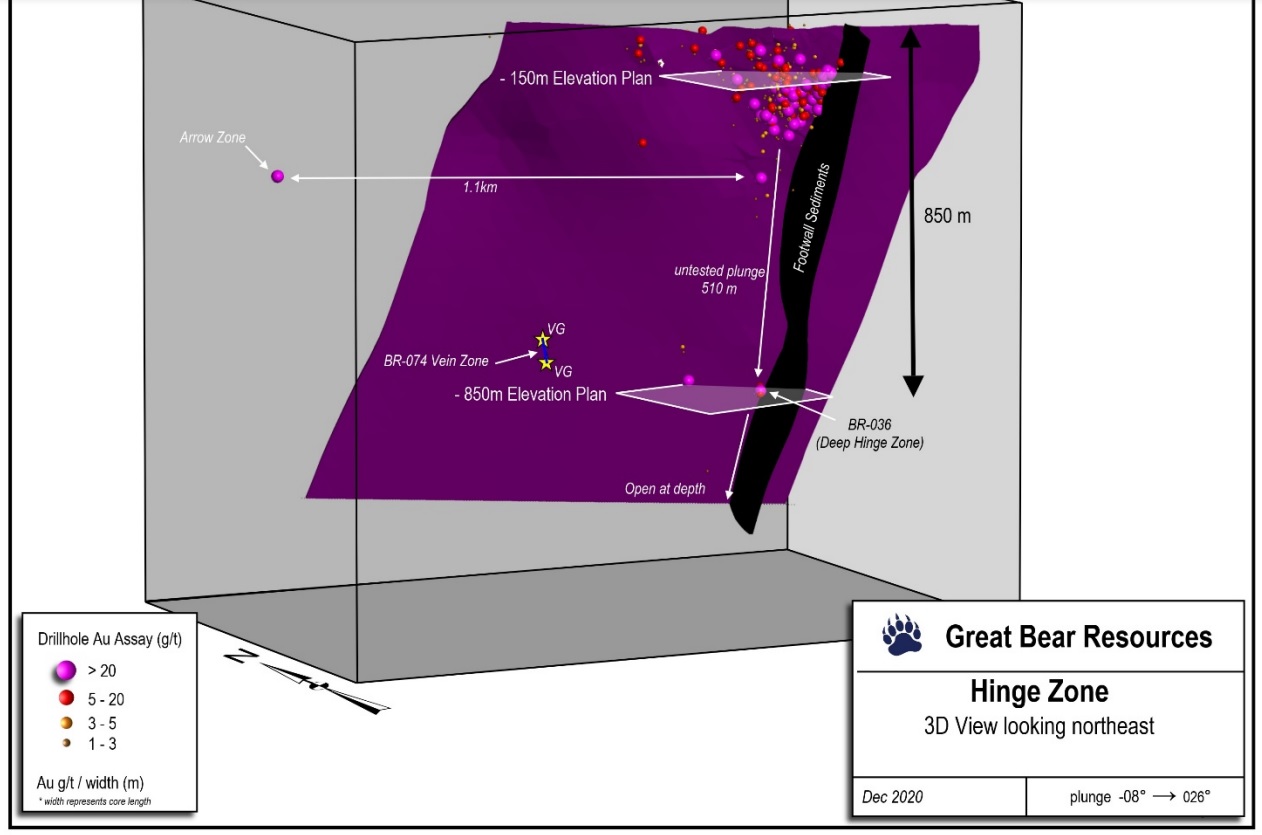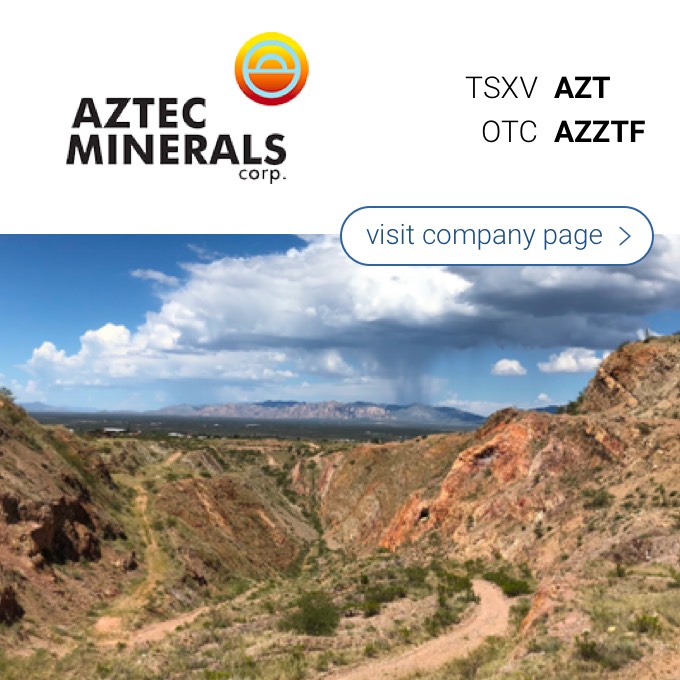
Great Bear Resources (GBR.V) went into trading halt right before the market opened on Wednesday and subsequently released an exploration update on the Hinge Zone, part of its Dixie Gold project in Ontario’s Red Lake gold district. While almost half an ounce of gold per tonne of rock over an interval of almost 5 meters is excellent, that’s not what the main takeaway of the press release was.
In this week’s exploration update, it wasn’t about grades or intervals, but about the location of the gold mineralization: Great Bear has encountered the gold mineralization in a very deep hole: hole 36 drilled in 2019 was extended from 537 meters to 1,425 meters (this is down hole and does not represent the vertical distance) and intersected the extention of the Hinge Zone at a vertical depth of 850 meters, and about 510 meters down-plunge from the previous deepest Hinge zone mineralized interval. The 4.9 meters of 15.18 g/t gold was actually encountered in a thicker interval of 15.3 meters containing 6 g/t gold starting at 1190 meters downhole (so approximately 850 meters from surface).

The confirmation of the gold system continuing at depth is important, but also not really a surprise. Brokerage house Canaccord had a look at the other gold systems in the camp and noticed Evolution Mining (EVN.AX) has encountered gold at a vertical depth between 1,000-2,400 meters (varying from deposit to deposit with Cochenour the ‘shallowest’ and Red Lake the deepest) while Battle North Gold’s (BNAU.TO) Bateman project has encountered gold at a depth of 1,350 meters and Pure Gold Mining (PGM.V) has chased gold to a vertical extent of 1,500 meters. This could indicate that Great Bear’s encounter of gold at a depth of 850 meters could still be just the beginning as virtually every other gold system in the region extends to in excess of 1,000 meters in vertical depth.
Disclosure: The author has a long position in Great Bear Resources, Great Bear is a sponsor of the website. Please read our disclaimer.

